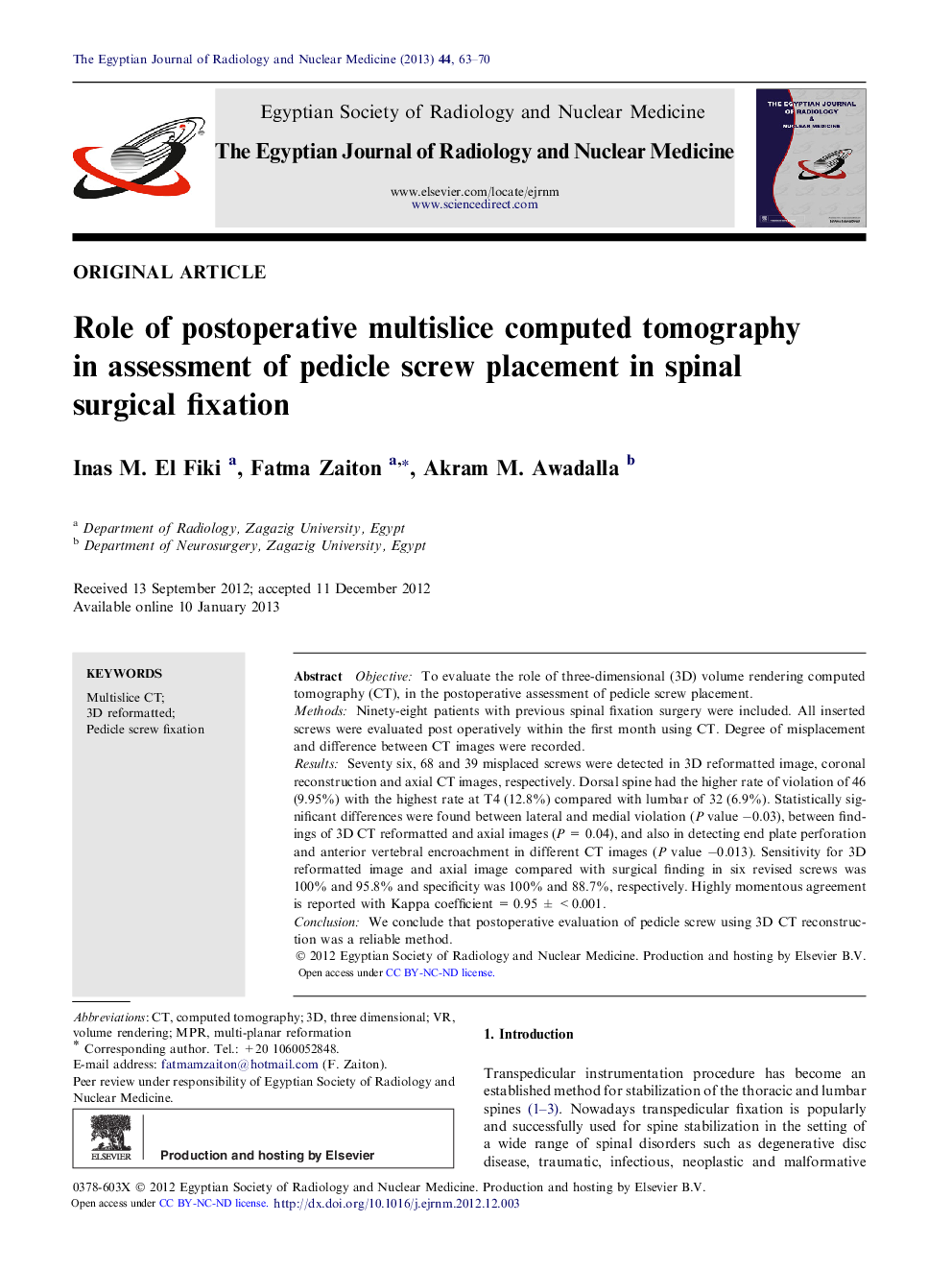| Article ID | Journal | Published Year | Pages | File Type |
|---|---|---|---|---|
| 4224522 | The Egyptian Journal of Radiology and Nuclear Medicine | 2013 | 8 Pages |
ObjectiveTo evaluate the role of three-dimensional (3D) volume rendering computed tomography (CT), in the postoperative assessment of pedicle screw placement.MethodsNinety-eight patients with previous spinal fixation surgery were included. All inserted screws were evaluated post operatively within the first month using CT. Degree of misplacement and difference between CT images were recorded.ResultsSeventy six, 68 and 39 misplaced screws were detected in 3D reformatted image, coronal reconstruction and axial CT images, respectively. Dorsal spine had the higher rate of violation of 46 (9.95%) with the highest rate at T4 (12.8%) compared with lumbar of 32 (6.9%). Statistically significant differences were found between lateral and medial violation (P value −0.03), between findings of 3D CT reformatted and axial images (P = 0.04), and also in detecting end plate perforation and anterior vertebral encroachment in different CT images (P value −0.013). Sensitivity for 3D reformatted image and axial image compared with surgical finding in six revised screws was 100% and 95.8% and specificity was 100% and 88.7%, respectively. Highly momentous agreement is reported with Kappa coefficient = 0.95 ± <0.001.ConclusionWe conclude that postoperative evaluation of pedicle screw using 3D CT reconstruction was a reliable method.
